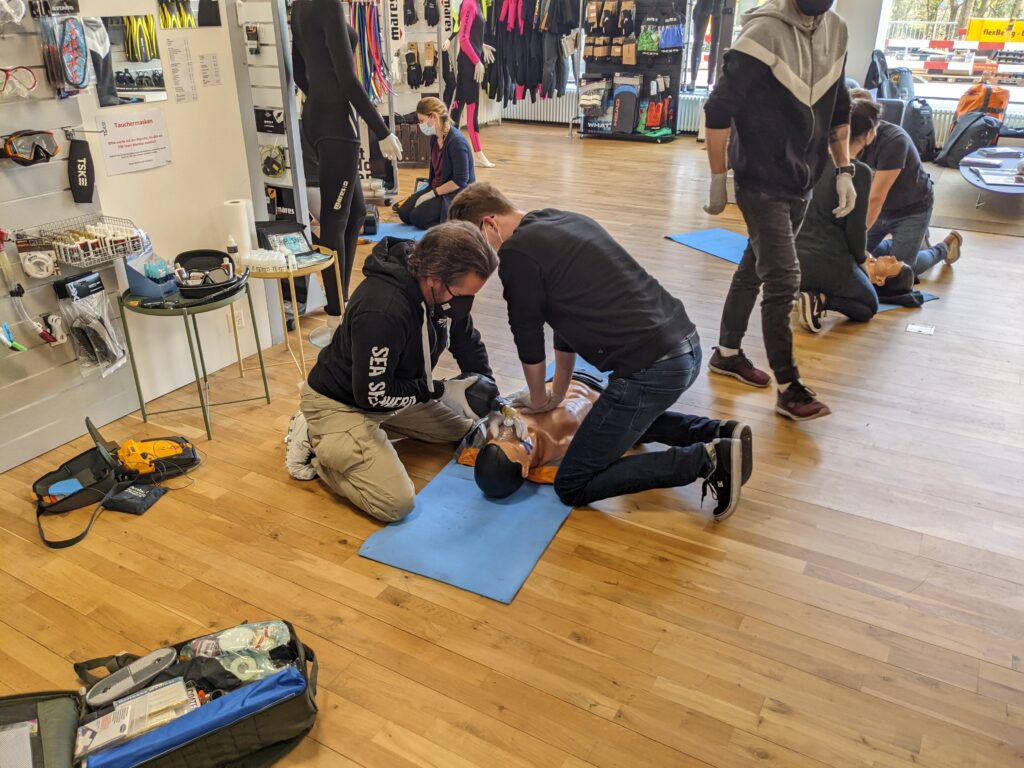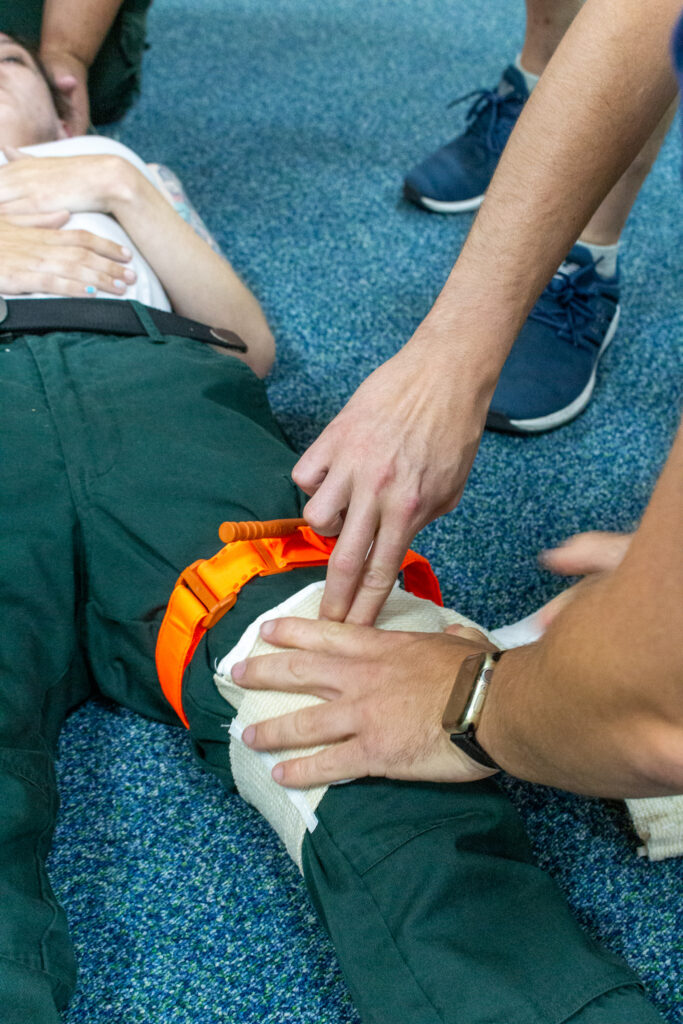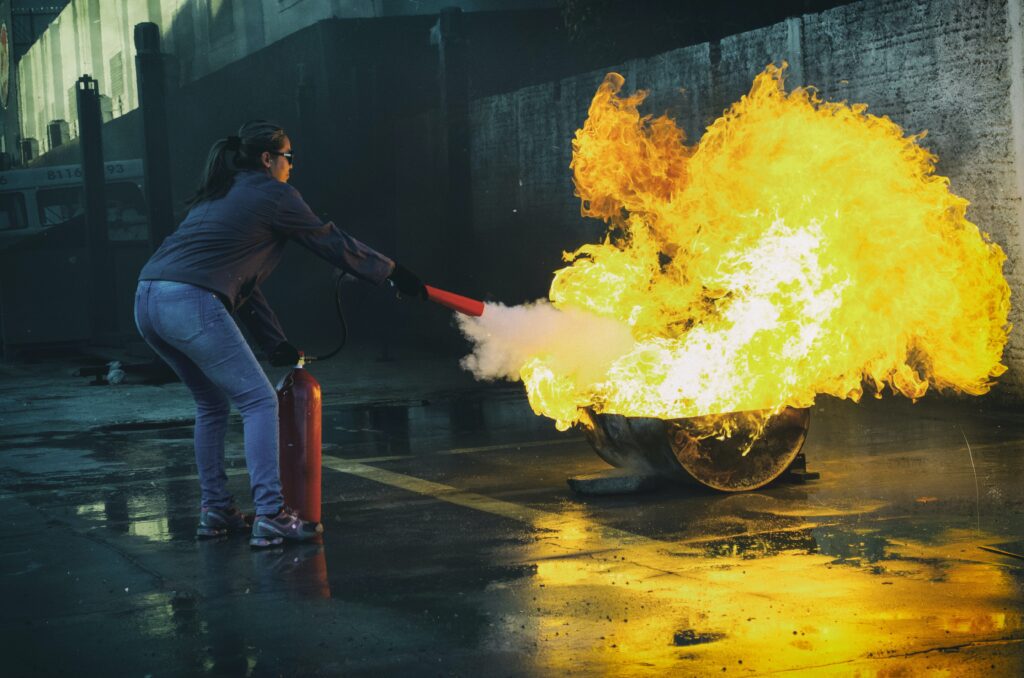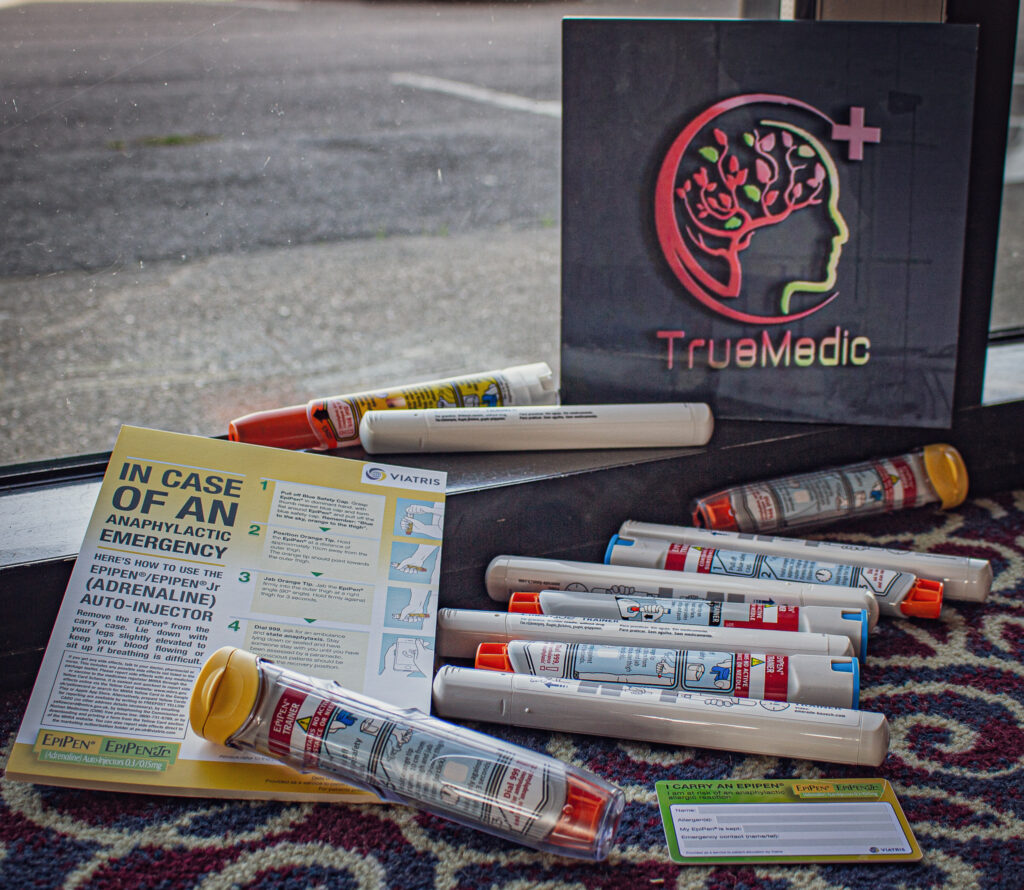Fire extinguishers are the key instruments to fight against flames. To be safe from a potential fire, every building should have it for safety. Even though fire awareness training is essential to know fire safety measures, having an extinguisher at hand is just as important.
Protecting our homes and businesses from fire dangers is a significant concern. However, with the right tools, fires can be prevented or contained if they break out. Fire extinguishers are critical tools and come in many different forms. Depending on their purpose and the kind of fire, they are designed to combat the fire. Each fire extinguisher has unique specialties.
Knowing how to operate and maintain the various fire extinguishers is essential for any responsible homeowner or business owner. This blog post covers the main fire extinguishers types and explains how TrueMedic Ltd provides fire safety training. Let’s get started!
What Are Fire Extinguishers?
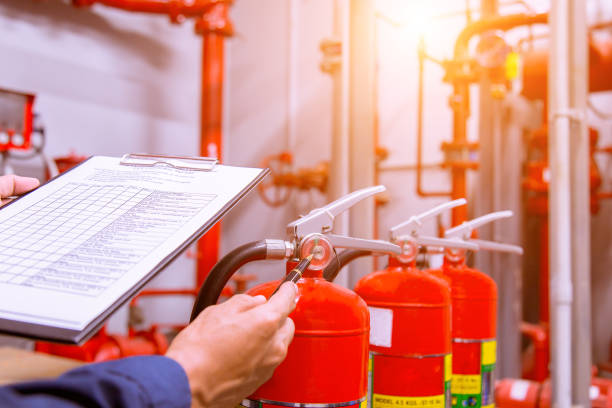
People often take fire extinguishers for granted until they are needed. Little do they know that these small but essential tools have been a lifesaver countless times throughout history. A fire extinguisher is an apparatus that dispenses an extinguishing agent to stop, limit, or control the growth of an unwanted fire.
This process works by cooling down objects and reducing the oxygen content in the area to reduce the potential for more fire. Fire extinguishers come in various shapes, sizes, and chemical combinations. It is essential to choose the right one depending on where it will be used and what type of combustion is likely to occur in that area.
Although they may look like a simple design, these devices can be highly effective when used correctly, So remember, never underestimate the power of a trusty fire extinguisher.
Types of Fire Extinguishers
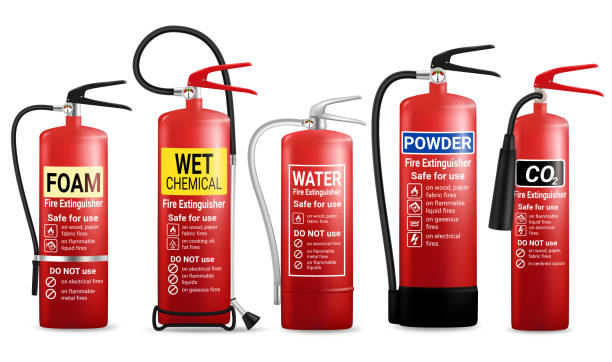
Fire extinguishers come in many different variations, but for this blog post, we will focus on the five main categories:
1. Water Extinguishers
Water extinguishers are a must-have in any given premise. Their bright red label makes them easy to spot. Typically used for Class A fire risk[1] caused by organic materials such as fabrics, coal, and wood, water extinguishers should not be employed on kitchen fires or flammable gas or liquids; electrical equipment also requires other intervention.
With the proper utilization of this device, you can rest assured that your property is well protected from potential flames. A water extinguisher works by cooling the scorching fuel and thus reducing its burning rate until all flames are extinguished.
These firefighting devices, be they foam or water types, must be present in certain kinds of buildings made of wood or organic materials, such as hospitals, schools, offices, warehouses, and residential properties.
With their help, you can protect these establishments from possible fires, which could cause significant damage to both property and people’s lives.
2. Foam Extinguishers
Foam extinguishers, also known as AFFF (aqueous film forming foam), are powerful firefighting tools that should be present in any premises where liquids such as petrol and oil are kept. This type of extinguisher works by smothering the flames and creating an aqueous film on the fuel surface, thus preventing any oxygen from getting to the fuel and extinguishing the fire.
Foam extinguishers are ideal for Class B fires[1] involving combustible liquids (oil, petrol, and alcohol). These extinguishers work by creating a cooling effect on the fuel that is responsible for causing the fire. When poured into a burning liquid, the fire is extinguished by creating a barrier between the fuel and the flame with the help of a foaming agent.
Regardless of the type or size of the building, foam extinguishers are necessary for any structure composed of organic materials, as well as those which store flammable liquids.
3. Dry Powder Extinguishers
Commonly called ABC extinguishers, the standard dry powder extinguishers can be used for class A, B, and C fires[1]. Unfortunately, it should not be applied in closed-off areas because the dry powder is hazardous if inhaled; additionally, it can leave behind residue post-fire, necessitating even further cleaning up.
Additionally, these are suitable for electrical equipment-related fire situations. For fires caused by combustible metals, special dry powder put-outers come with blue labels attached.
These extinguishers work simply; when the dry powder is projected onto an ignited material, it suppresses the flames through heat absorption and removal. It is important to note that this technique only applies to Class A, B, and C fires, as it does not work on electrical equipment or metal fires.
4. Wet Chemical Extinguishers
Wet chemical extinguishers are perfect for Class F fires, such as those with cooking oils and fats. Although foam or water fire extinguishers tend to be the go-to choice for common Class A risks, wet chemical solutions make an excellent alternative that can help protect your business from any potential danger[1].
A wet chemical fire extinguisher is a practical choice for Class F fires involving cooking oils and fats and Class A fires. Alternatively, foam or water extinguishers are more commonly used on these types of fires; dry powder extinguishers create a barrier between the fuel source and oxygen supply, their label colour being yellow.
Wet chemical extinguishers effectively tackle fires formed from organic materials such as wood, coal, fabrics, and paper and can also be used on textiles and cardboard.
5. Carbon Dioxide (CO2) Extinguishers
Carbon dioxide (CO2) extinguishers are the go-to choice for electrical fires and should be stocked in any building with a high risk of such an incident. The gas is a non-conductive, inert substance that smothers the fire with an oxygen-depleted atmosphere to cut off the fuel source and extinguish the flames.
CO2 fire extinguishers are also an ideal choice for Class B fires and should be kept in any area where there is a risk of an electrical fire occurring.[3] It is important to remember that CO2 is a non-conductive substance, meaning it won’t cause any damage to delicate electronic equipment.
Additionally, you should be aware that C02 extinguishers are unsuitable for fires involving combustible materials or flammable liquids. The black label affixed to the body should help you identify it as a carbon dioxide extinguisher.
How Can TrueMedic Ltd Help with Fire Safety Training?
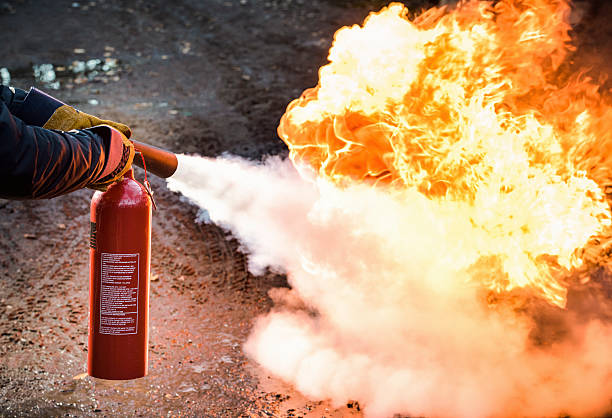
With the help of TrueMedic Ltd, you can rest assured that your premises are fully equipped and compliant with fire safety regulations. We offer fire safety training and awareness courses to ensure that all staff members within your organisation know the procedures and protocols when dealing with potential fires.
TrueMedic Ltd will work with you to ensure you have the proper extinguishers and are regularly maintained and serviced. We understand the importance of having a reliable fire safety system. Contact us today to learn more about our range of services and enrol in our fire safety awareness course to ensure your premises are safe and secure.
FAQs
1. What is a CO2 fire extinguisher used for?
CO2 fire extinguishers are designed for electrical fires and can be used on Class B liquid fires. However, their usage method varies depending on the type of fire. It’s important to avoid using CO2 extinguishers in confined spaces since the gas becomes toxic at concentrations as low as 4% and can be lethal at just 8%.[2] Stay safe and use them properly.
2. What is the Colour code of the fire extinguisher?
Fire extinguishers are coded by colour to indicate the type of fire they are designed to tackle. Red extinguishers are water-based and designed for Class A fires involving combustible materials such as wood, paper, or plastics. Blue extinguishers contain dry powder suitable for tackling Class B fires involving flammable liquids, such as petrol or paint.
Cream-coloured extinguishers are foam based and used for Class A and B fires, while black extinguishers contain carbon dioxide (CO2) and are suitable for ABC fires involving electrical equipment. It is vital to ensure you use the correct type of extinguisher on each fire, as using the wrong one can be ineffective and even dangerous.[2]
3. What pressure is a CO2 extinguisher?
CO2 fire extinguishers are instantly recognisable by their flute-shaped discharge horn and contain carbon dioxide gas (CO2) at an exceedingly high-pressure level of around 55 bar under average indoor temperature.
4. What are the symbols of a fire extinguisher?
Selecting the suitable fire extinguisher is simple: look out for A, B, C, or D labels., Many extinguishers also feature pictograph labels to make it easier to identify which class of fire they are explicitly designed to fight against.[3]
References:
[2]https://surreyfire.co.uk/types-of-fire-extinguisher/
[3]https://fire-risk-assessment-network.com/blog/types-fire-extinguisher/


